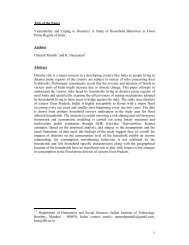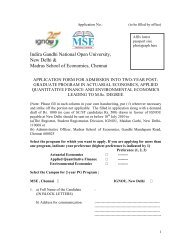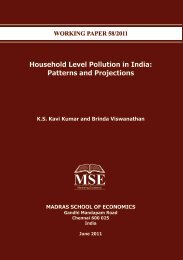A Macro-Fiscal Modeling Framework for Forecasting and Policy ...
A Macro-Fiscal Modeling Framework for Forecasting and Policy ...
A Macro-Fiscal Modeling Framework for Forecasting and Policy ...
You also want an ePaper? Increase the reach of your titles
YUMPU automatically turns print PDFs into web optimized ePapers that Google loves.
we want to test the hypothesis that a 1 = 1. Now, under the null hypothesis, the {y t }<br />
sequence is generated by the non-stationary process:<br />
y t = y t-1 + t = y t-2 + t-1 + t = …= y 0 + i=1 t = i=1 to t t (2.7)<br />
Thus, if a 1 = 1, the variance becomes infinitely large as t increases. Under the<br />
null hypothesis, it is inappropriate to use classical statistical methods to estimate <strong>and</strong><br />
per<strong>for</strong>m significance tests on the coefficient a 1, which has a non-st<strong>and</strong>ard distribution<br />
because variance is infinity. Most conventional asymptotic theories <strong>for</strong> least-squares<br />
estimation (e.g. the st<strong>and</strong>ard proofs of consistency <strong>and</strong> asymptotic normality of OLS<br />
estimators) assume stationarity of explanatory variables, possibly around a deterministic<br />
trend. Concern <strong>for</strong> spurious regression is the main reason why the time series analysis is<br />
concerned with stationarity as opposed to conventional econometric theory.<br />
Trend Stationarity<br />
A time series process should be considered trend stationary if after trends are removed,<br />
it is stationary. Phillips <strong>and</strong> Xiao (1998) define this as follows: if a time series process y t<br />
can be decomposed into the sum of other time series as below, it is trend stationary:<br />
y t = gx t + s t (2.8)<br />
where g is a k-vector of constants, x t is a vector of deterministic trends, <strong>and</strong> s t is a<br />
stationary time series. Phillips <strong>and</strong> Xiao (1998) say that x t may be "more complex than a<br />
simple time polynomial. For example, time polynomials with sinusoidal factors <strong>and</strong><br />
piecewise time polynomials may be used. The latter corresponds to a class of models<br />
with structural breaks in the deterministic trend."<br />
The process of removing the trend is known as „de-trend‟, which is done simply<br />
by regressing the given series on constant <strong>and</strong> a trend variable <strong>and</strong> using the residuals<br />
from that regressions (which is stationery zero) in the subsequent analysis. Alternatively,<br />
the trend variable is included in the regression in which the given series is dependent<br />
variable.<br />
2.3 Structural Breaks<br />
There is now an extensive body of literature in econometrics relating to structural<br />
change. These works highlight the importance of identifying structural breaks in<br />
econometric models, as they lead the changes in the parameters-mean, variance <strong>and</strong><br />
trend. If a variable is a trend stationary with structural breaks, then the variable may be<br />
used in its level in the time series analysis, but on the right side of the regression<br />
27



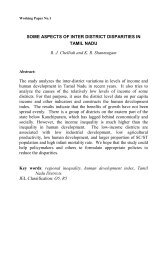

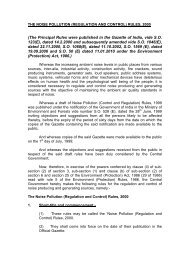
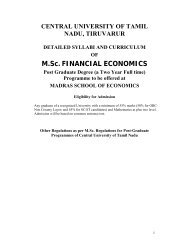
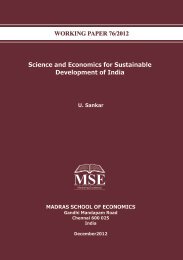
![Curriculum Vitae [pdf] - Madras School of Economics](https://img.yumpu.com/49878970/1/190x245/curriculum-vitae-pdf-madras-school-of-economics.jpg?quality=85)
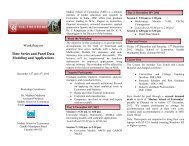
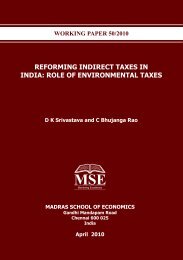
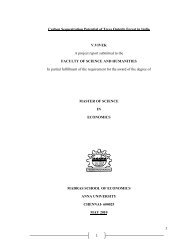
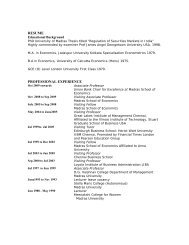
![Curriculum Vitae [pdf] - Madras School of Economics](https://img.yumpu.com/48715201/1/184x260/curriculum-vitae-pdf-madras-school-of-economics.jpg?quality=85)
